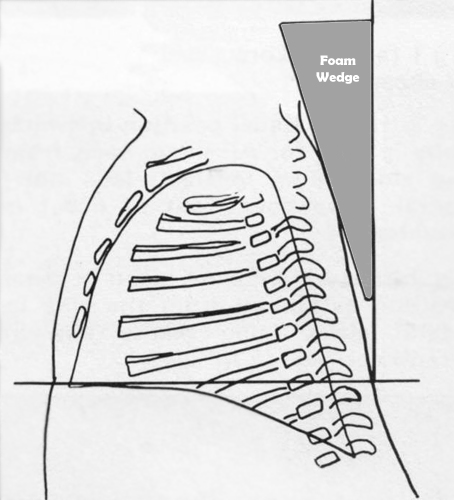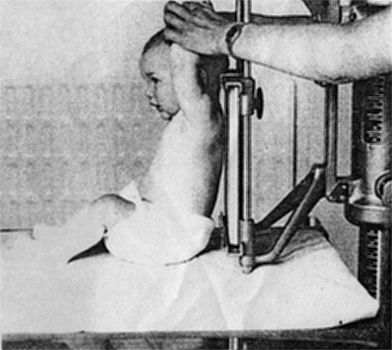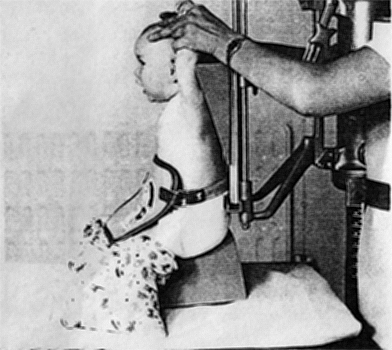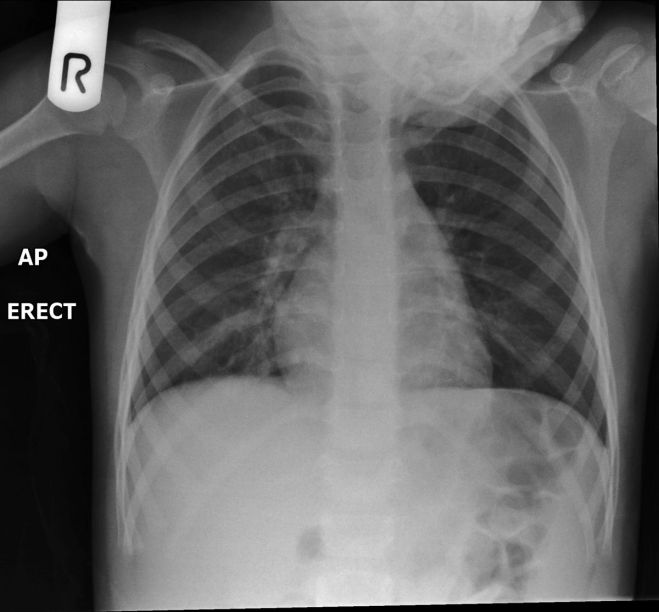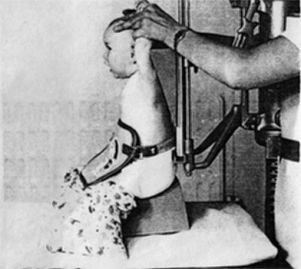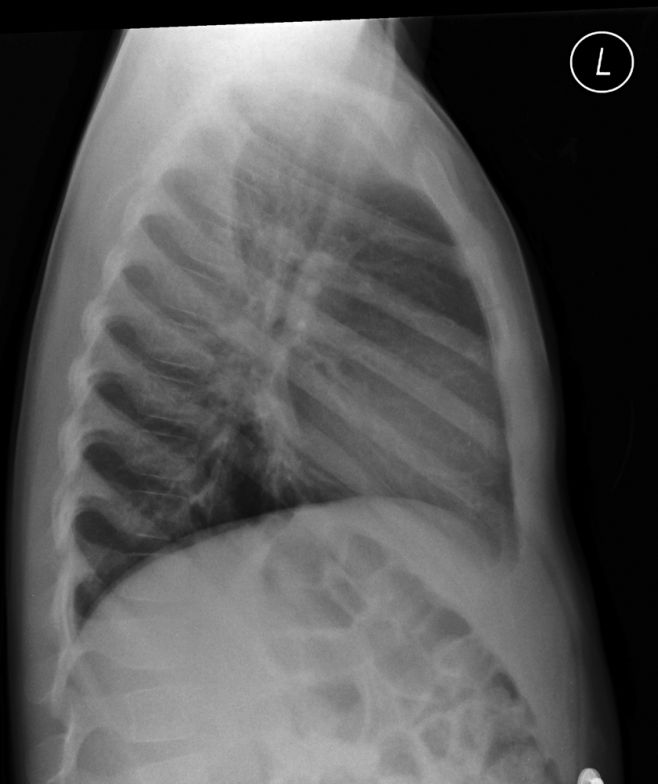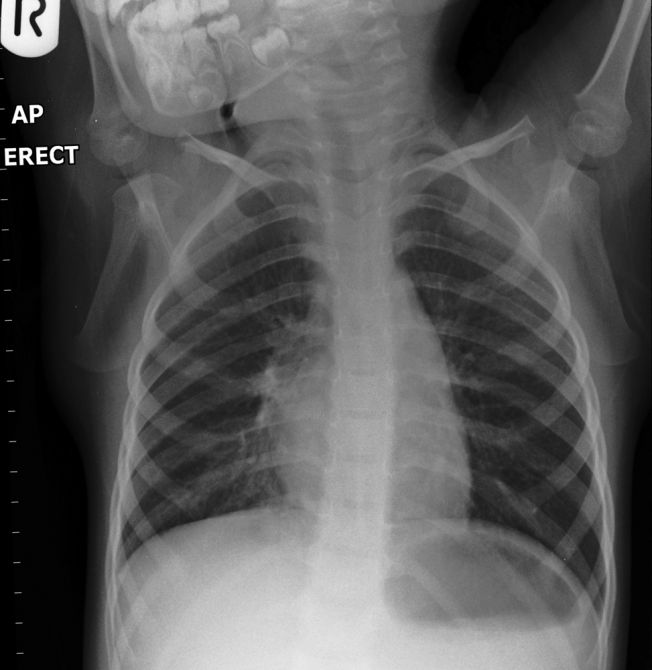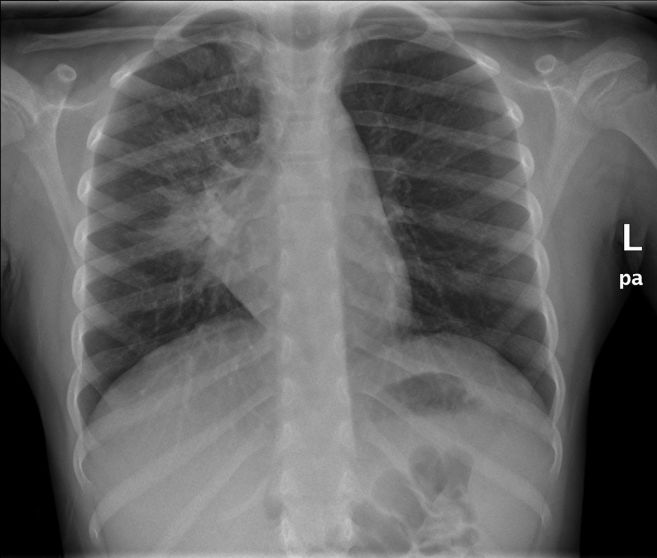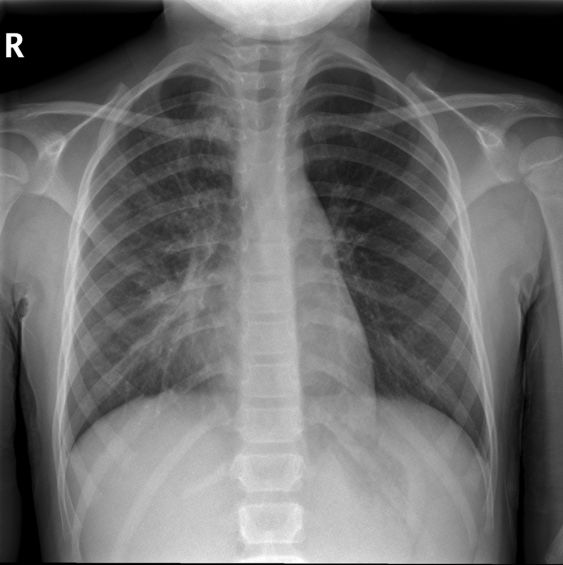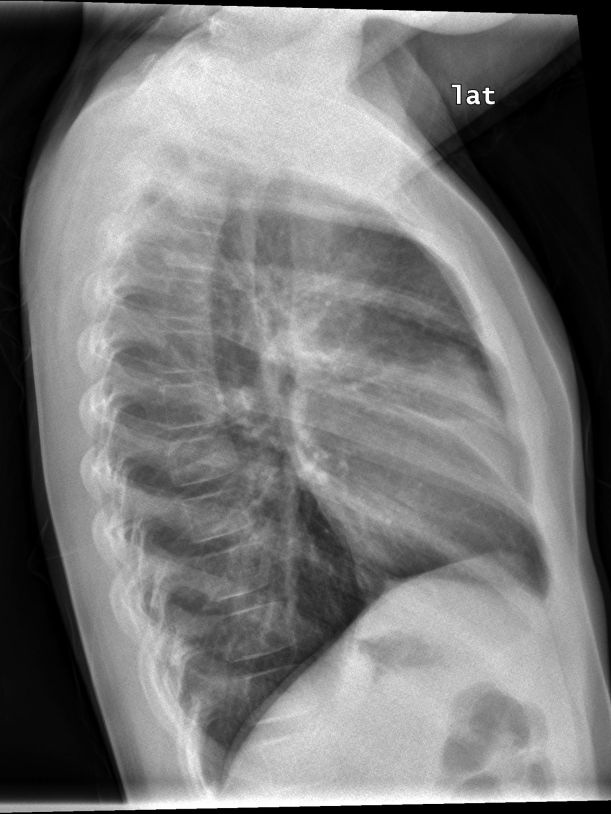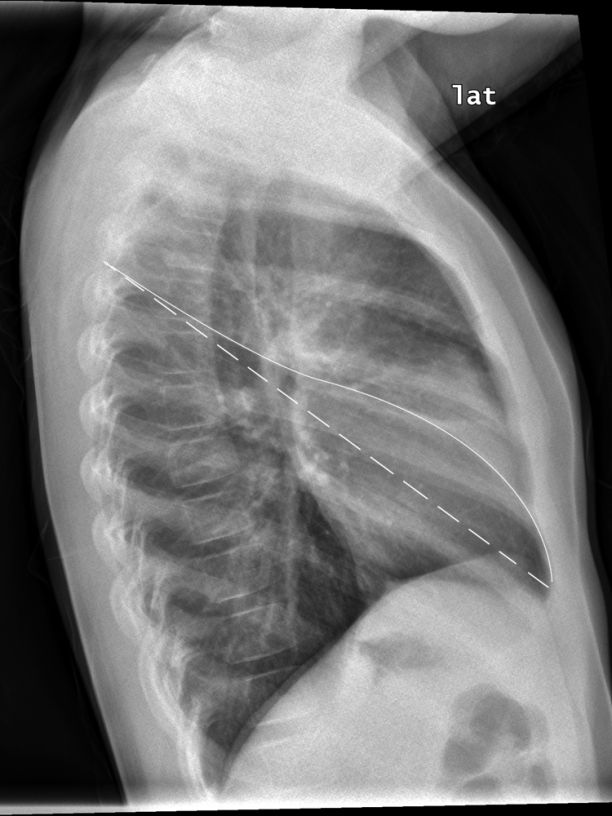Notes on Paediatric Chest Radiography
Relevant Wikiradiography pagesPaediatric chest radiography tends to be done very well in dedicated paediatric institutions and less well everywhere else. It is worth arranging to spend some time in a paediatric imaging department to develop paediatric radiography skills. This page covers all aspects of paediatric chest radiography technique.
Notes on Paediatric Chest Radiography
- Children over the age of 5 years are usually able to be positioned in a PA erect position for chest radiography. (some 4 year olds will be sufficiently compliant for PA/AP erect chest radiography)
- There is very little difference between PA and AP chest radiography in children (Caffey 1978, and Hochschild and Cremin, 1975)
- There is very little difference between left and right lateral chest radiography in children
- AP Chest radiography has several advantages over PA chest radiography in children
- The radiographer can watch the child's breathing in order to expose on full inspiration
- It is easier to hold a child straight and still
- The child can watch the tube being centred and the beam collimated without turning around
- The child's arms should be held against the side of the child's head with elbows flexed and pointing forwards.
- an 18 x 24cm is suitable for children up to about 2 years
- an 24 x 30cm cassette is suitable for children up to about 7 or 8 years
- movement of the abdomen rather than the chest is watched to ensure exposure on full inspiration
- Exposure time should be less than 0.02 seconds
- A paediatric lead rubber apron should be employed for gonad protection for the child
- The adult holding the child should be protected by at least 0.5mm lead equivalent
(Catherine Gyll, Noel Blake, and A Thornton. Paediatric Diagnostic Imaging, 1985, p4,John Wiley and Sons, New York)
- It is undesirable to position the child/baby with the legs horizontal for chest radiography- some kind of seat is preferred such that the child's hips are higher than his/her knees
- When examining children over the age of 3 it is useful to have the child practice taking a deep breath before the exposure.
Preventing the Lordotic Projection
Case 1
Case 2
This 6 year old girl presented to the Emergency Department with a temperature of 39 degrees. She was assessed and referred for chest radiography
Comment
This case illustrates the vital link between a radiographer's image interpretation skills and their radiographic skills- proficiency in image interpretation will assist in deciding when to repeat and when not to repeat. The original AP erect chest image demonstrates an abnormal pattern that you would not expect in a child who presents with a high temperature. Common pathologies and patterns of pathology occur commonly and they are looked for first. It was the combination of pattern recognition skills and image evaluation skills that led the radiographer to the conclusion that the patient's pathology had not been demonstrated correctly. The repeat AP erect chest allows for the easy recognition of RML and RUL disease- it is a pattern that is easily recognisable in a correctly positioned AP/PA chest.
... back to the Wikiradiography home page
... back to the Applied Radiography home page
